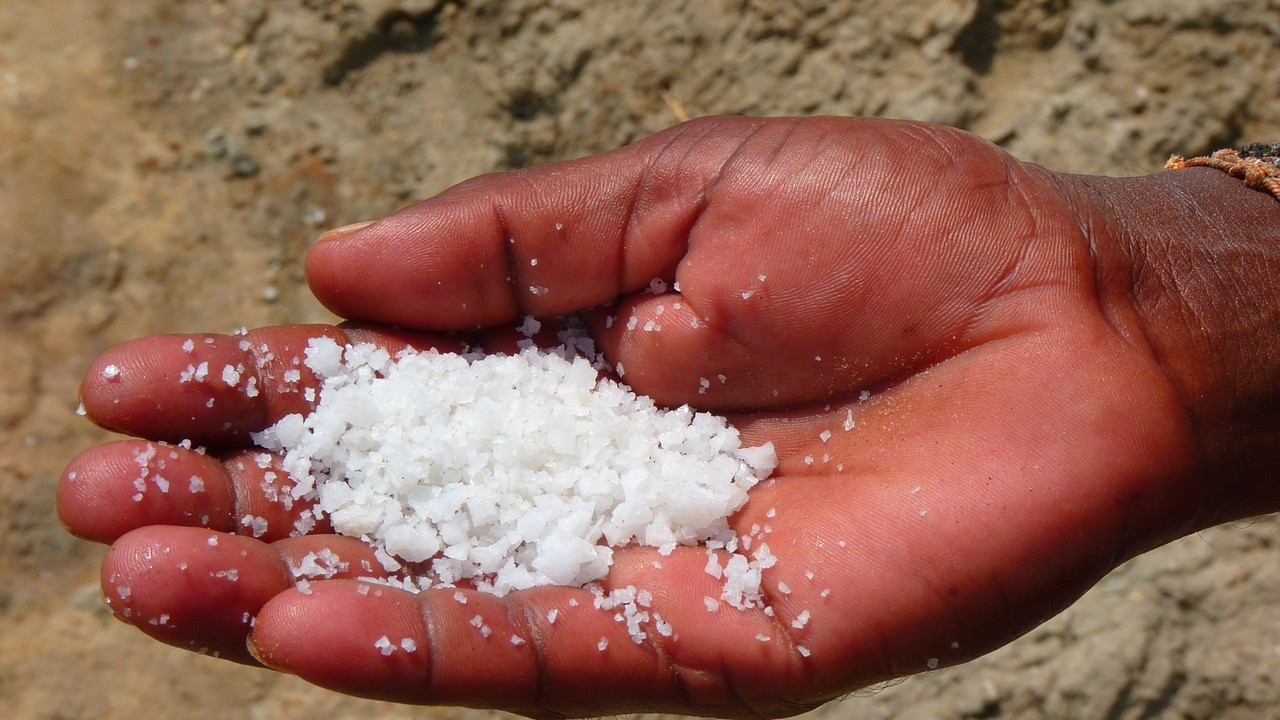
Low-Sodium Diets: Not Worth Their Salt
Why does salt have such a bad rap?
The word “salary” is derived from salt.
"Salt of the earth” is what Jesus called his buds.
Salt is used in many religious purification rituals.
The words “salad,” “sauce,” and “sausage” are all rooted in the word “salt,” their inherent deliciousness depending on it.
The early American pioneers used salt to preserve their food and probably ate about twice as much salt as we do today.
When the colonists were denied salt by the British as a Revolutionary war tactic, they figured out how to produce it on their own.
The human quest for salt, throughout history, has led to the creation of the main trade routes and therefore, human civilizations have sprung up along these lines.
And now salt is bad?
Salt, you may remember from chemistry class, is made of sodium and chloride, held together by a ionic bond that breaks down upon digestion. Sodium is found in many other food sources, good and bad, but chloride is not found in many food sources, save salt.
Chloride helps regulate water pressure in our cells and it also produces hydrochloric acid, a necessary ingredient for digestion. Do you have acid reflux? Most people who suffer from this problem are actually lacking in hydrochloric acid.
DIFFERENTIATE BETWEEN “LOW-SODIUM” AND “LOW-SALT”
The war on salt began around 1972 when the National High Blood Pressure Education Program began to warn people of the danger of eating too much sodium.
Many studies that show how dangerous salt is lack other dietary information: are the participants eating a lot of veggies or just processed foods? Are the studies providing unnaturally high amounts of sodium?
What about using natural sea salt in a regular, healthy diet?
Most studies that correlate high blood pressures with higher salt intake aren't accounting for the whole picture.
And exactly how high was the blood pressure of the test participants? Too high or just higher than it was before?

Up until the 1980s, this was the medical standard for blood pressure.
Plus, most people eating a “low-salt diet” are eating too many processed foods. Many of these foods are contaminated with artificial ingredients like MSG and other sodium-based ingredients. Paradoxically, these low-salt diets are very high in sodium! They are encouraging the very thing they claim to treat.
Similar to how these sugar-laden drinks are being sold to diabetics.
In Chinese medicine, salt is one of the five main flavors. Some foods, like seaweed, celery, duck, and pork, contain salt naturally as part of their chemical makeup. The 5 flavors balance each other out in a healthy diet.
Salt is moistening (part of the water element) and softening. It balances the flavors of foods and aids digestion. It’s cooling as well. If you have dry conditions (dry skin, dry nose, dry anything), hot skin eruptions, or swelling of your lymph nodes, you can use more salt. If you have fluid retention (too much water element), use less salt.
There’s a reason why food tastes better with salt: it’s good for you! Just make sure you’re eating real food and using real salt. Use a good quality pink or grey salt or a good sea salt. Stay away from bleached and processed (like “iodized”) salt.
Always, always, always READ LABELS when you buy food. People (including yours truly) are surprised to learn their favorite (even from the health food store, people) packaged foods contain food chemicals like
- Disodium guanylate (GMP)
- Disodium inosinate (IMP)
- Monosodium glutamate (MSG)
- Sodium nitrate
- Sodium citrate
- Sodium chloride
- Sodium diacetate
- Sodium erythorbate
- Sodium glutamate
- Sodium lactate
- Sodium lauryl Sulfate
- Sodium metabisulfite
- Sodium phosphate
- Trisodium phosphate
Food chemicals are non-foods. They’re made in a lab and designed to trick the consumer by enhancing the taste of the foods.
This list is only partial; there are thousands of food chemicals. They make foods addictive and extremely unhealthy. Real food is rarely the culprit in health concerns.
So read your labels, or even better, just make your own food!
And add as much natural sea salt to your meal as you want to make it taste good. (It really only takes a pinch.)
Don't miss a beat!
New moves, motivation, and classes delivered to your inbox.
We hate SPAM. We will never sell your information, for any reason.
